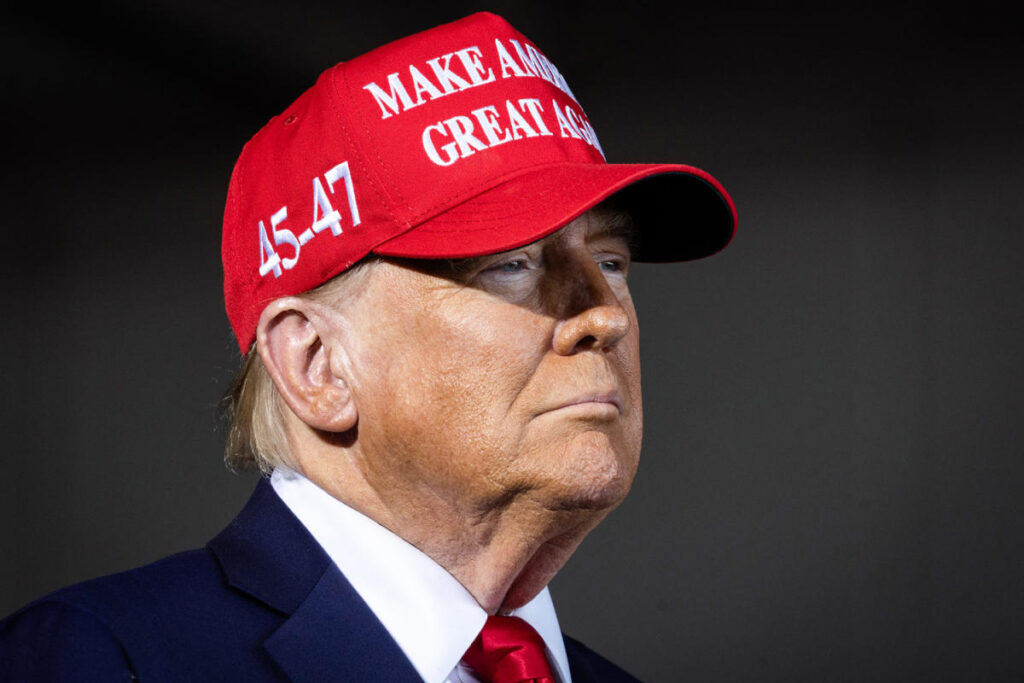As Election Day draws near, Donald Trump prepares to execute an unconventional campaign strategy by scheduling rallies in deeply Democratic states where he is unlikely to win. This approach, highlighted by planned events in Colorado, California, Illinois, and New York, seeks to capitalize on perceived failures of Democratic policies while diverting attention from traditional battleground states known to be crucial for election outcomes. With President Joe Biden having secured these states by significant margins in 2020—averaging a 20-point victory—Trump’s decision to rally in these territories is a departure from typical electoral campaigning, which usually focuses on areas with competitive races.
The choice of venues for these rallies, including Madison Square Garden and other high-profile locations, is designed to maximize media coverage and ensure broad visibility for Trump’s message. A senior campaign adviser emphasized the importance of using impactful settings to garner national media attention, claiming that the extraordinary nature of these rallies can enhance Trump’s visibility, even reaching voters in critical swing states like Georgia, Pennsylvania, and Wisconsin. The adviser framed Trump’s campaign closing as a robust critique of the Biden administration’s leadership failures while presenting Trump’s solutions to the problems they claim were created by current policies.
Critics of Trump’s strategy view it as lacking a clear focus on key electoral battlegrounds, reflecting an inclination towards bold, attention-grabbing campaigns rather than strategic positioning. Matthew Bartlett, a longtime Republican strategist, noted that Trump’s history of unconventional tactics makes this impulsive rally approach potentially beneficial in expanding his appeal among certain demographic groups that may traditionally support Democrats. As Trump seeks to reshape the Republican Party’s identity to attract working-class voters, there is speculation regarding whether this strategy could infiltrate and diminish traditional Democratic voting bases.
Within Trump’s campaign, there is optimism about their overall prospects, backed by significant online viewership for his rally broadcasts that extend into swing states. This confidence allows for an adventurous approach. Some supporters believe that rallying in solidly Democratic regions may also indirectly benefit down-ballot Republican candidates by creating enthusiasm among voters in those areas, even if direct wins in the presidential election are not anticipated. Notably, although there are no major Senate races in the states where Trump plans to rally, some contentious House races could see a positive impact from his presence.
However, the strategy of targeting firmly blue states is not without its detractors. Local officials, such as Coachella’s Mayor Steven Hernandez, have openly criticized Trump, arguing that his rhetoric is antithetical to the values of diversity and inclusion in their community. Trump’s past controversial statements have come under scrutiny, particularly concerning his comments on immigration and crime, as seen in his focus on cities like Aurora, Colorado, which has been the center of contention due to misconceptions he propagated. Local authorities have refuted Trump’s claims, yet his camping events appear poised to reinsert these issues into national discussions on immigration during the campaign.
High-profile rallies like those planned in Chicago and New York are meticulously orchestrated, with the latter holding special significance for Trump as a native New Yorker. GOP strategists speculate that the impact of crowd sizes at rallies on Democratic turf could serve psychological benefits for the Trump campaign, potentially shifting perceptions of competitiveness in the race. All of these factors contribute to a view that Trump is not merely taking chances but is engaged in a calculated effort to shape the narrative of the election as he positions himself against Biden and Harris. With just weeks to go, the effectiveness of this unconventional strategy will become evident as Election Day approaches, and its implications for down-ballot races remain to be fully realized.

